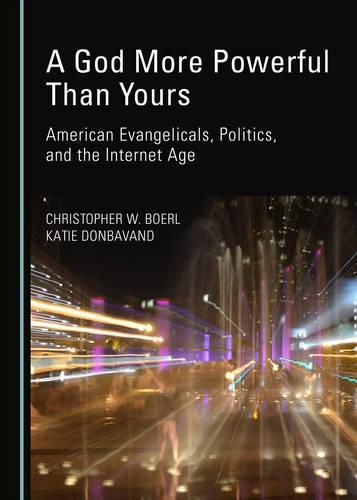Readings Newsletter
Become a Readings Member to make your shopping experience even easier.
Sign in or sign up for free!
You’re not far away from qualifying for FREE standard shipping within Australia
You’ve qualified for FREE standard shipping within Australia
The cart is loading…






Throughout American history, religious movements have repeatedly proved themselves to be powerful forces capable of masterfully manipulating the social and political landscape of the nation. Key to the influence religious organizations have historically held in the United States is their use of communication technologies. In this vivid account, Christopher Boerl and Katie Donbavand adroitly weave a rich narrative illuminating the effects various historical phenomena have had and the reactionary religious response which followed. Through shifting social norms and political realities, the authors also show the role media has played in nurturing religious movements and fanaticism. Broadcast media in particular is identified as a unique conduit through which the now dominant, conservative articulation of Christianity both took root in the United States and flourished as an imposing cultural standard. More recently, new communication technologies, such as the Internet and social media, have usurped the reign of broadcast media. In so doing, these technologies are serving as a form of religious pluralization and theological fragmentation. In short, new communications technologies are fragmenting a once homogenous religious body, and, in so doing, proving that some gods are more powerful than others.
$9.00 standard shipping within Australia
FREE standard shipping within Australia for orders over $100.00
Express & International shipping calculated at checkout
Throughout American history, religious movements have repeatedly proved themselves to be powerful forces capable of masterfully manipulating the social and political landscape of the nation. Key to the influence religious organizations have historically held in the United States is their use of communication technologies. In this vivid account, Christopher Boerl and Katie Donbavand adroitly weave a rich narrative illuminating the effects various historical phenomena have had and the reactionary religious response which followed. Through shifting social norms and political realities, the authors also show the role media has played in nurturing religious movements and fanaticism. Broadcast media in particular is identified as a unique conduit through which the now dominant, conservative articulation of Christianity both took root in the United States and flourished as an imposing cultural standard. More recently, new communication technologies, such as the Internet and social media, have usurped the reign of broadcast media. In so doing, these technologies are serving as a form of religious pluralization and theological fragmentation. In short, new communications technologies are fragmenting a once homogenous religious body, and, in so doing, proving that some gods are more powerful than others.